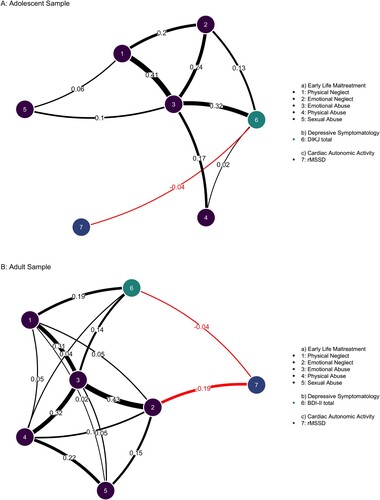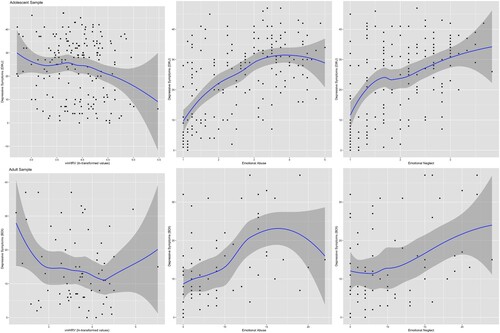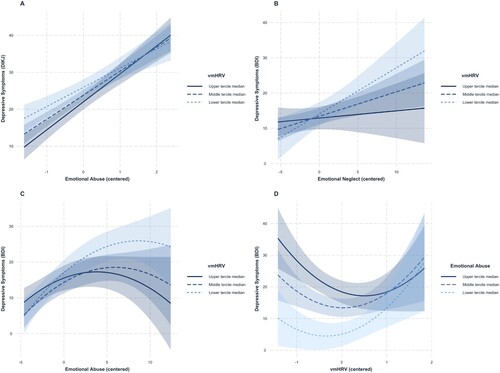Figures & data
Table 1. Summary characteristics of key demographics and clinical data for the adolescent and adult sample, respectively, considering exposure to ELM as grouping variable.
Figure 1. Visualization of the network models, including nodes representing ELM exposure, depressive symptoms, and vmHRV. Network layout is adjusted on the Fruchterman-Reingold algorithm (Fruchterman & Reingold, Citation1991), resulting in edges with stronger connections being grouped together. Red lines indicate negative partial correlations, while black lines indicate positive partial correlations. The more saturated the edge, the stronger the partial correlation.

Figure 2. Scatter plots visualizing the relationships of (ln-transformed) vmHRV values, emotional abuse, and emotional neglect with depressive symptoms in adolescent (upper panes) and adult females (lower panes), respectively. In adolescents, the relationships of vmHRV and emotional neglect with depression appeared likely to be linear, in contrast to emotional abuse, which adapted a rather nonlinear function; in adults, the relationships of both vmHRV and emotional abuse with depression adapted a rather quadratic function, while considering emotional neglect, the respective relationship appeared to be linear.

Figure 3. Visualization of interactions between resting-state vmHRV and emotional maltreatment in the prediction of depressive symptoms. In linear models, a marginally statistically significant interaction was observed between emotional abuse and vmHRV in female adolescents (A), and a significant interaction was found between emotional neglect and vmHRV in female adults (B). In a quadratic model, in female adults, the interaction between emotional abuse and vmHRV was found to be statistically significant (C; D)

supplementary materials.pdf
Download PDF (16.7 MB)supplementary materials blinded.pdf
Download PDF (16 MB)Data Availability Statement
The data that support the findings of this study are available on reasonable request from the responsible authors (VC, MK). The data are not publicly available due to ethical restrictions. Code used in the analyses is made publicly available by the corresponding author and can be accessed online (https://osf.io/vd7rh/?view_only = d547aa842a92457b9eaa5381941f91a8).
